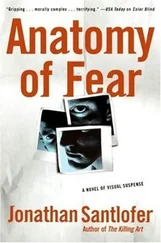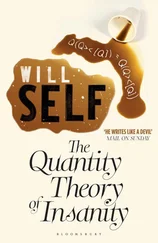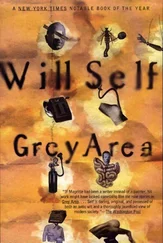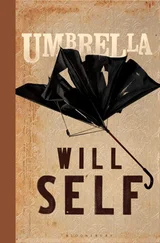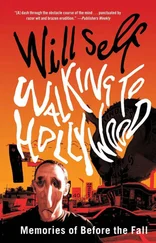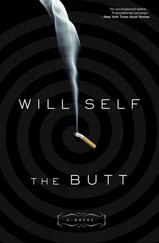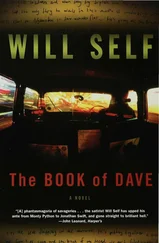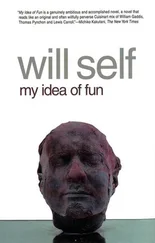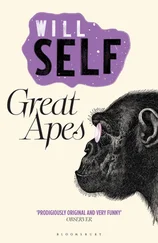Billy had first seen the film on television when he was four or five years old; but even then — it was originally released in 1968 — its depiction of flowery fun was painfully dated: the beautiful people of Hollywood cavorting the night away. Besides, it was a crap film with a dumb script — no plot to speak of, only a series of farcical sight gags for Sellers, browned up to play Hrundi V. Bakshi, a useless Indian who haplessly destroys the house where the eponymous party is being held, a party he has been invited to in error, and that is being thrown by the producer of a movie he’s already sabotaged with his stupid mistakes and brainless antics.
It was on the location for that movie-within-a-movie that Billy habitually began his drug-dreaming. So I — we — were inside Billy, who was inside the bath inside Tony Riley’s flat. In there with us was a ravine, somewhere out beyond Barstow, chosen for its superficial similarity to the Hindu Kush; and in the ravine were Hispanic extras playing Pathan tribesmen, together with more Hispanic extras playing sepoys. A detachment of Hispanics marched along the bottom of the ravine, accompanied by an Hispanic pipe band miming their instruments. The Hispanics playing the tribesmen — and a few light-skinned, Caucasian-featured blacks — reared up from the rocks above and made ready to fire. Frantic to frustrate the ambush, the half-Jewish Sellers — who, presumably, had been sent ahead as a scout — reared up as well, blasting a bugle. The Hispanic Pathans turned their rifles on him and he was struck by their volley. The bugle notes flattened into farts, Sellers collapsed, then reared up again, crazily tootling.
This was where Billy, as Peter Sellers, as Hrundi V. Bakshi, made his entrance: a junky in a bath in a fantasy of a film. He had seen The Party next in his teens, again on television; this time he was banged up in a secure hostel on the Goldhawk Road. This second viewing confirmed for Billy that this was ‘his’ film: an acid-pastel ball, in which he could perceive his dull childhood transmuted to the plinkety-plunk beat of a Henry Mancini soundtrack. Eventually Billy had acquired his own videotape of The Party . It was wrapped in a pair of bloodstained combat trousers and pushed behind the hot-water tank in a bungalow near Pinner.
Billy’s white body, fishily flattened by refraction, undulated in the cold water as he mimicked the flips and flops of the comedian; who died in 1980 of a heart attack — his third — brought on by the amyl nitrate he huffed on the sets of movies such as The Party . Billy’s wide mouth — which could be described as generous only if what you wanted was more plaque — stretched into a rictus. Outside, Georgie’s taps increased in volume as the drizzle percolating De Vere Gardens bubbled into rain.
Along a gloomy corridor that ran the length of the basement flat, between Dexion shelving units stacked with papers and paperbacks waiting to be burnt, then between a thicket of cardboard tubes that sheathed old point-of-sale materials and posters, then in through an open door, the minute sound waves pulsed, to where Tony Riley, the Pluto of this underworld, sat on a sofa in his boxer shorts, his unshaven muzzle clamped by the transparent obscenity of an oxygen mask, while the cylinder lay on the cushion beside him, steely and fire-engine-red.
I — we — were in Tony, too, not that this mattered; the catch, then gush, as his own febrile inhalation triggered the valve and yanked a gush of oxygen into his defeated lungs, drowned out everything: hearing, thought, intention, feeling. Tony was hanging on to life by his teeth, which were sunk in the plastic mouthpiece. Shitty disease, emphysema; shitty paradoxical condition. Tony sat in a stale closet, into which every small sip of air had to be dragged down a long corridor wadded with cellulose, while beneath his rack of ribcage his lungs were already abnormally distended.
Tony Riley’s legs were kite struts in the flattened cloth of his boxers; his sweaty T-shirt hung on him like a scrap of polythene on a barbed-wire fence; his dirty-brown hair was painted down on to his canvas scalp; his grey eyes streamed behind once fashionable Cutler and Gross glasses. Up above him, on the purple and taupe striped wallpaper, hung a Mark Boxer cartoon of Tony in his heyday. It was a prophetic casting of inky sticks: the Roman profile and laurel wreath of hair simplified to a few thin and thick lines. Two decades on, the caricature was as good a likeness as any photograph — perhaps better. No photo could have captured the way Tony’s breathless need for heroin simplified the awesome clutter of the large, low, subterranean living room — its middle-aged armchairs and smoked-glass coffee tables, its Portobello Road floor cushions and swampy Turkish kelims, its portable commode and novelty coat tree — into two white dimensions of nothing.
Beside Tony’s meagre thigh there lay a scrap of tin foil, on which trailed burnt heroin. Chasing the dragon? For Tony it was more akin to staggering after a snail: he huffed, he puffed, he struggled to exhale, so that he could carve a tiny pocket in the necrotic tissue of his lungs to fill with the narcotic fumes.
Tony spat out the mouthpiece, snatched up the foil and, from the coffee table in front of his sofa, a gold Dupont lighter; then he grabbed a rolled-up tube of tin foil, poked it between his lips and hunched to his labour.
‘In the primitive environment,’ Lévi-Strauss wrote, ‘the relevant is the sensational.’ But really, in Tony Riley’s basement flat, it was too primitive even for that ; here, sensations were muffled and numbed by mould and opiates; the rain falling on the roof five storeys above penetrated the slates, then joists, plaster, paint, carpet, floor boards and more joists, until it pattered on to the jungly floor between the chief ’s bare feet. The parrot of addiction flapped across the dank clearing to perch on the edge of a serving hatch. Oh, that noble psittacine! Longer lived than humans, perfectly intelligent, and well able to imitate the squawks of their most awful mental pathologies.
Outside, Georgie’s tapping had finally risen to a determined rapping. It was only 12.20; nevertheless, the most dissolute of establishments still have their routines. There were chores to do, calculations to be made, the supplier to be contacted; then, soon enough, the customers would begin arriving. She rapped, the glass bruising her clenched knuckles. She had once had a body that, like any affluent woman’s, was a gestalt of smell, texture and colour — but now that had all flown apart: she was as dun as a cowpat, you wouldn’t want to touch her, her smell was in your face.
‘Whereis’e? Stupid Billy. Fucking Billy. Open up. Gotta do Tony’s meds. Call Andy. Gotta do Tony’s fucking meds. Call Andy. Gotta do Tony’s meds — ’ This aloud, the narrative of her staggering thought replacing the saga of her limping walk along Kensington Road.
Skin pancaked between bone and glass; the raps marched through the kitchen, along the sepia corridor, and into the room where Tony was trying to recapture the thrill of the chase. He left off, let fall his impedimenta, stood and lurched to the doorway. ‘Billy!’ he shouted in a crepitating whisper. ‘It’s her — get the fucking door!’ Then he crumpled up as thoroughly as any scrap of tin foil.
‘Brill-ll-llerowng! Brill-ll-llerowng! Brill-ll-llerowng!’ Billy had discovered that if he plugged his ears in a certain way and pressed his mouth against the side of the bath, his submarine ejaculations sounded — to him — like sitar chords. Billy, as Peter Sellers, as Hrundi V. Bakshi, sat cross-legged on the floor of his Los Angeles bungalow, wearing a long-sleeved, collarless linen shirt. The big bole of the instrument was cradled in his lap, his browned-up face concentrated in mystic reverie. ‘Brill-ll-llerowng!’ When the letter-box flap lifted, a letter fell on to the mat, and the flap clacked shut. Clacked shut. Clacked shut again. It wasn’t meant to do that — this was the invitation to the paradisical party, and he, Billy-as-Hrundi, was simply meant to pick it up, open and read it; but the fucking flap wouldn’t stop clacking!
Читать дальше

